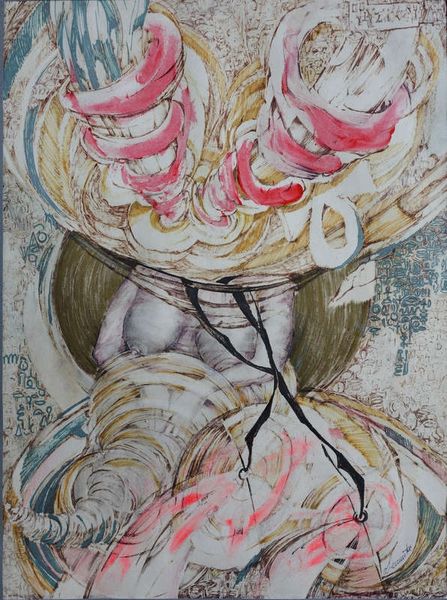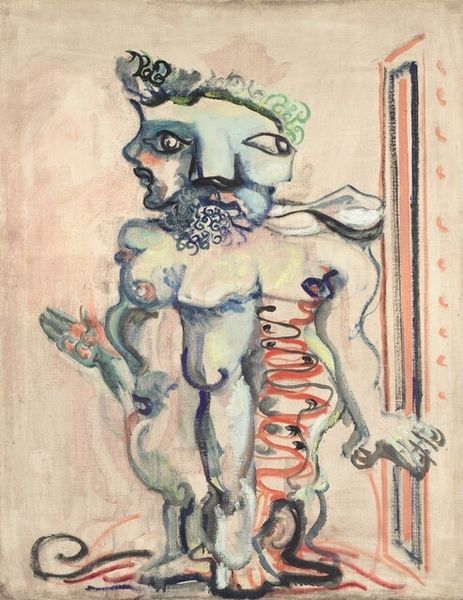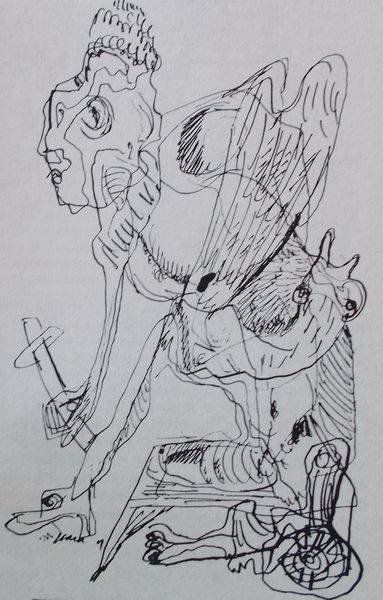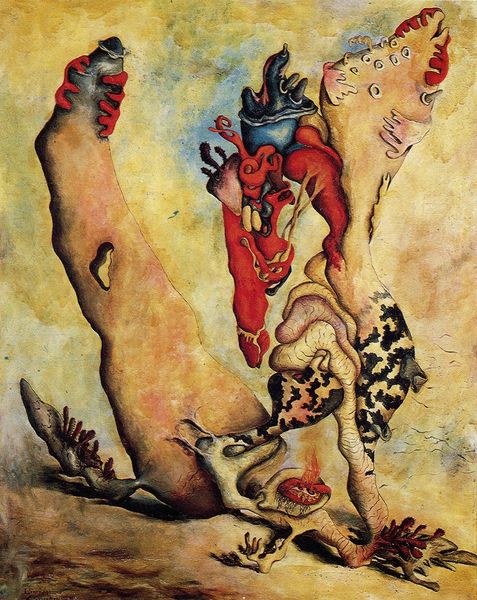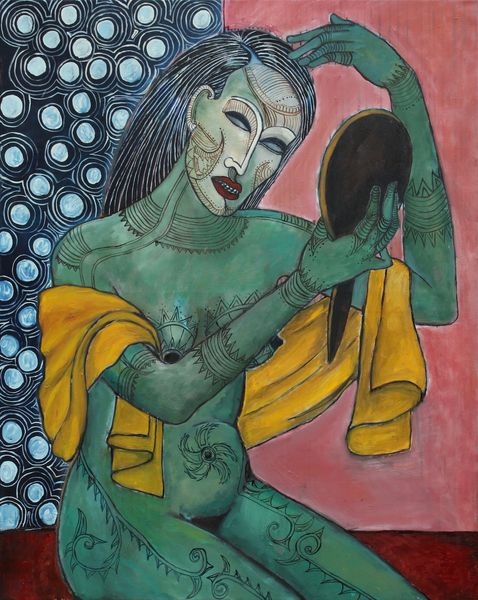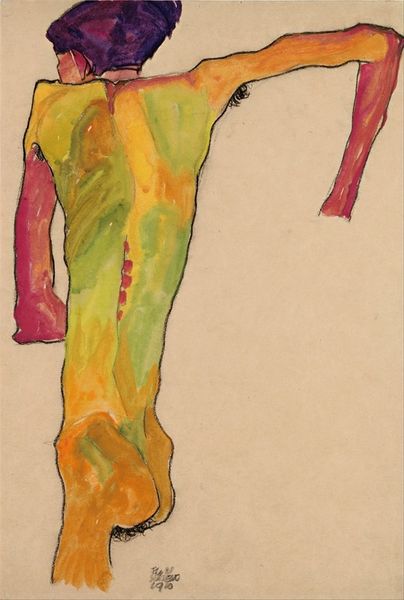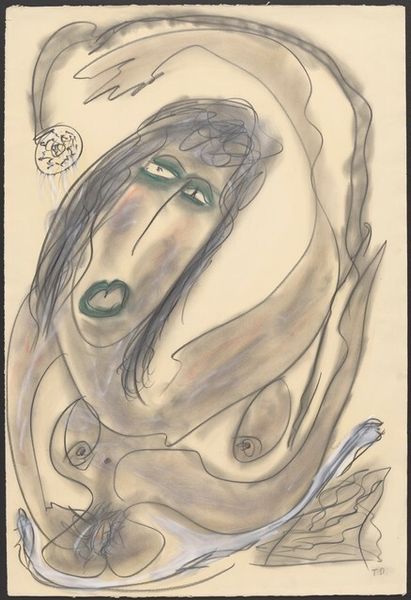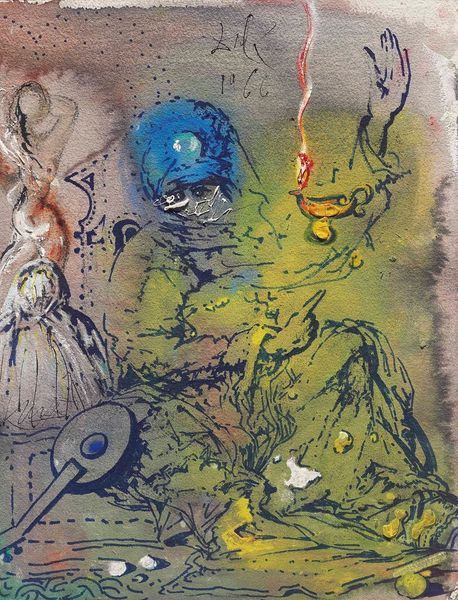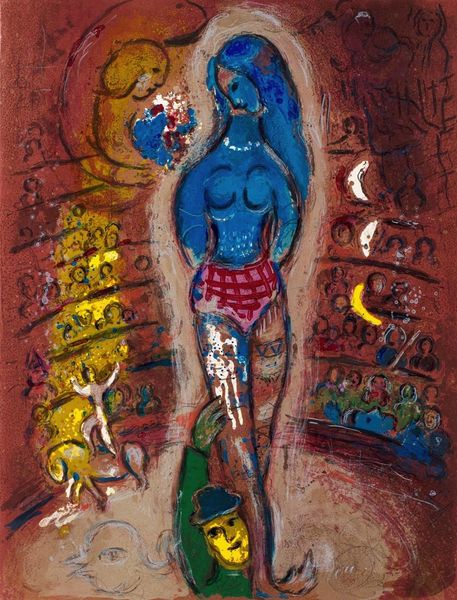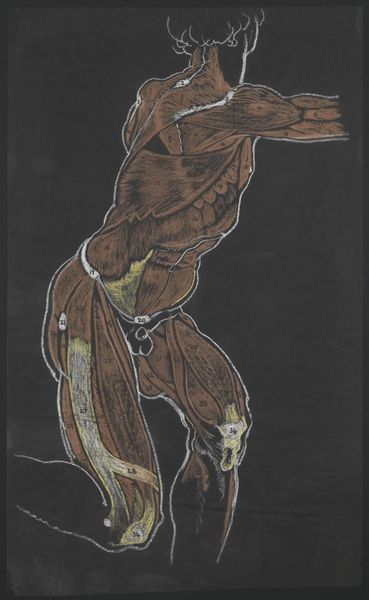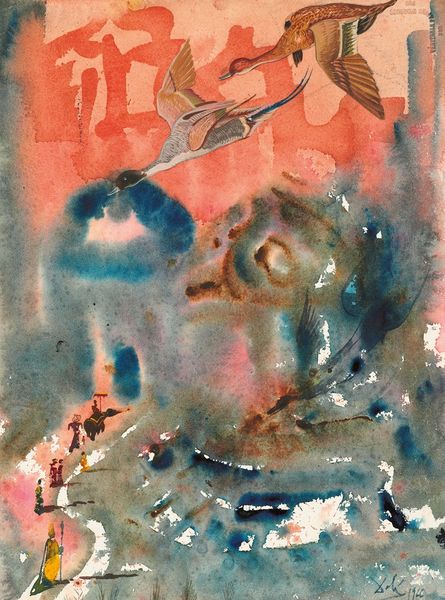
watercolor, pencil
#
portrait
#
figuration
#
watercolor
#
pencil
#
watercolour illustration
#
history-painting
#
surrealism
#
miniature
Copyright: Modern Artists: Artvee
Editor: Here we have Salvador Dalí's 1967 piece, "To be or not to be," rendered in pencil and watercolor. There's a haunting, theatrical quality to it – what do you see in this work? Curator: This miniature portrait speaks volumes about the existential anxieties prevalent in the mid-20th century. Note the figure's self-contained nature, literally a box within a body, alluding to the alienation individuals felt post-World War II. This reflects the political climate and disillusionment with traditional power structures. How does that resonate with you, seeing the period? Editor: I hadn't thought about the postwar anxieties reflected, but the figure seems almost trapped, isolated on that barren landscape. Curator: Exactly. Dalí uses the figure, possibly alluding to Hamlet with the title, as a site to explore broader issues of identity, power, and freedom. Notice how the internal figure – a tiny skeleton - contrasts the outward performative gesture, reflecting a sense of inner turmoil. Do you see any echoes of existential philosophy in this opposition? Editor: It does bring to mind Sartre or Camus, struggling with meaning and authenticity. Is the androgynous presentation of the figure important? Curator: Absolutely! The ambiguous gender challenges normative power structures, opening a dialogue around identity and destabilization of the self. Think of the social upheaval happening in 1967 - civil rights, second-wave feminism. Editor: It's interesting to consider how Dalí folded those social tensions into such an intimate portrait. Curator: Yes, and viewing the "miniature" quality, not as diminishment but concentrated symbolic power in an unsettling reflection of our times. A pertinent message in times of continued political tensions. Editor: It provides such a revealing and new lens through which we might interpret and understand the work.
Comments
No comments
Be the first to comment and join the conversation on the ultimate creative platform.
